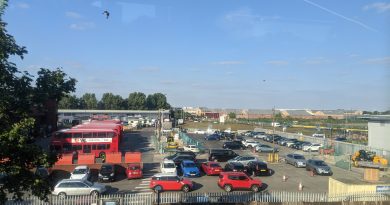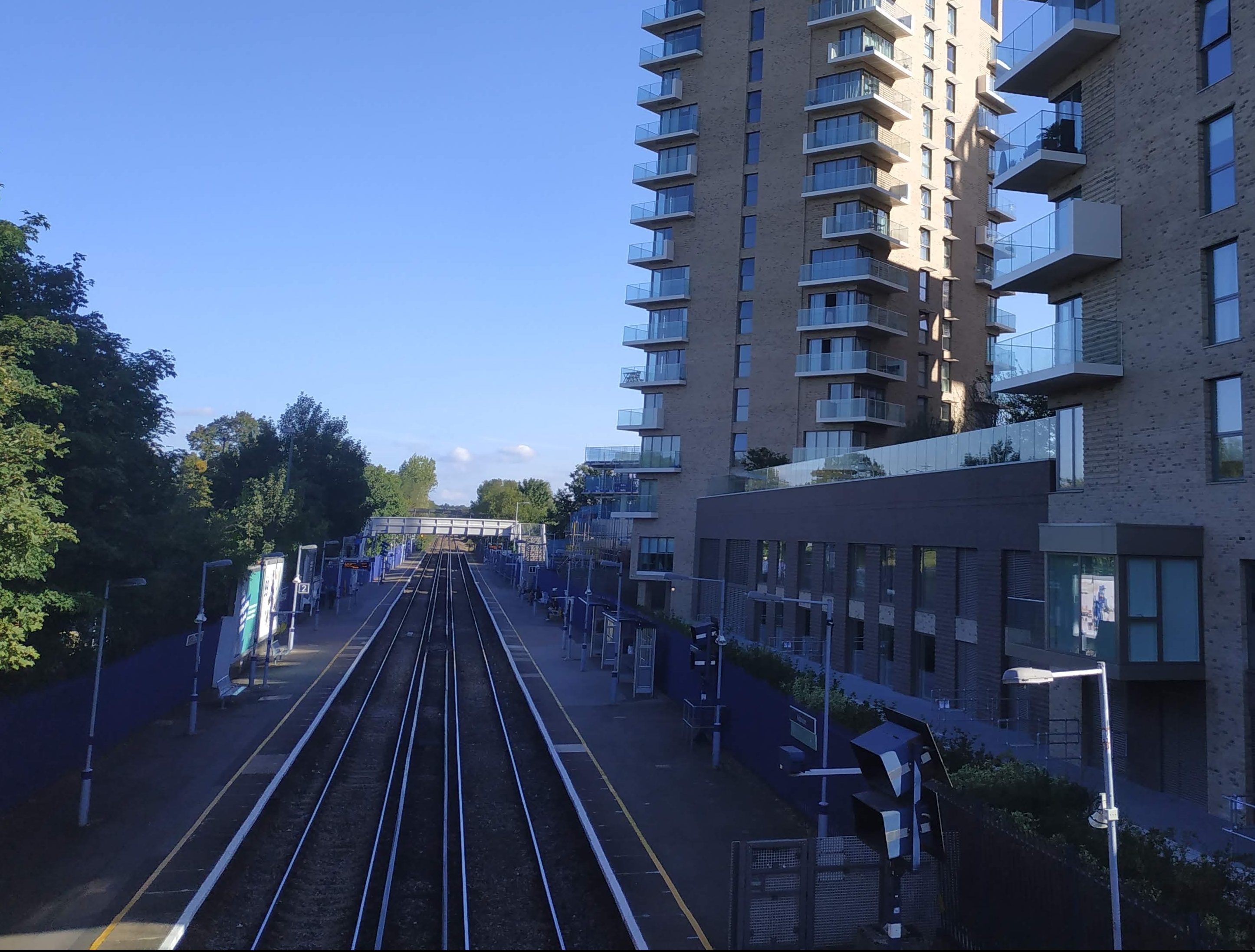Oyster comes to Dartford – as nearby housing developments push ahead
After many years of campaigning for Oyster to be installed at Dartford, it’s finally happened. It’s exclusion has always been an example of fractured planning, and being the only station on the lines to Dartford outside of London has caused the long delay.
The line from Cannon Street to Dartford via Greenwich has 15 stations – 14 accepted Oyster except the very last. Thankfully this anomaly, which caught many out resulting in a large number of fines, will now end. Though it will be in zone 8. The readers will finally be switched on this Sunday 6th September.
Housing in the north
It’ll come in handy for new residents moving into the new housing developments in Dartford, with many located just north of the station, which was re-built in 2013. A huge swath of industrial land is transforming to residential as part of the ‘Northern Gateway’ and ‘Mill Pond’ schemes. Work has been slow, but a few hundred are now under construction, with many more to come.
These sites were the former GlaxoSmithKline plant. 620 jobs were lost when it closed in 2008, and it followed the trend of reducing local employment whilst jobs in central London and Canary Wharf increase, placing more strain on transport networks.
The site has been divided into various parcels. On the Mill Pond site of the factory, a minutes walk from the station, 400+ homes are planned at ‘Langley Square‘ from Weston Homes.
In addition, 950-1050 homes will be built at the eastern part of ‘Northern Gateway’. ‘The Phoenix’ from Barratt Homes is part of this, with work now underway on the initial 90 homes.
At the western section of Northern Gateway, at the former Arjo Wiggins paper mill site on Priory Road, 175 homes are being constructed by Bellway. 30 are now complete in stage 1, and 145 under construction.
Alongside this on Priory Road, Weston Homes are building 117 homes at ‘Waterford Place‘. It too is now well under construction.
A lot of the marketing suggests people will travel from Ebbsfleet. Not very likely. People living next to Dartford station are not going to travel to the main employment areas of London – the City, West End and Canary Wharf – by heading out to Gravesend, then changing onto HS1 to King’s Cross or Stratford, before changing again to reach their destination. They’ll get a Southeastern train direct to Charing Cross, Cannon Street or Victoria in about 30-45 minutes. It’s no slower, less stressful and two grand less to boot for a season ticket. To head to Canary Wharf it’s a train to Woolwich Arsenal then DLR, which again is much cheaper. It does mean busier trains coming into London though on the Dartford line, which will meet increasing demand closer to central London at places like Deptford (12% annual growth) and Kidbrooke (19% annual growth).
The developments can be seen on this map of Dartford and Medway developments. It’s at a very early stage mind and missing many developments. Double click to zoom into the Dartford area:
Further north is ‘The Bridge‘ – 1500 homes by Bob Dunn Way. The scheme is a 264-acre mixed-use project that Prologis is developing with Dartford Borough Council. Persimmon are building 260 homes as part of this. They have completed 90 homes and now working on 170.
Town centre
South of the station, in the town centre, there’s huge potential for more much needed housing but large schemes such as Tesco have stalled. They halted plans back in January after 10 years prevarication, killing a part of the town centre in the process. The plans were pretty awful, so hopefully something far better comes along. The former co-op store is another example of long term landbanking. Plans were approved in 2007. Eight years later and little has happened on the 176-home approved scheme.
The town centre could also accommodate far more homes given the preponderance of car parks and retail parks. The area directly to the south of the station alone is a mass of single level car parks. These sites are prime candidates for high density residential conversion with quick and frequent links to London. At 30 minutes to London Bridge demand would be strong.
It will however require far greater investment in infrastructure, which is lagging behind housing schemes, let along future potential. Dartford’s ailing town centre would also see a boost from an increase in people living within walking distance of shops. With rapid increases in population (1 million plus in London over the next ten years), towns like Dartford need massive density increases. Though the recent boost in house building is welcome, it’s still far from enough.
I’ve said it a thousand times, but Crossrail is unlikely to fix crowding on Southeastern metro routes beyond a short term fillip, and more trains are required. Crossrail was needed a decade or two ago. If a relatively cheap and simple job such as longer trains to London will not be provided by the Department for Transport or funded by the Treasury, then what hope for more substantive infrastructure investment?







Finally. In the past I have witnessed queues of people at Dartford, all holding an Oyster cards waiting to pay a penalty fine.